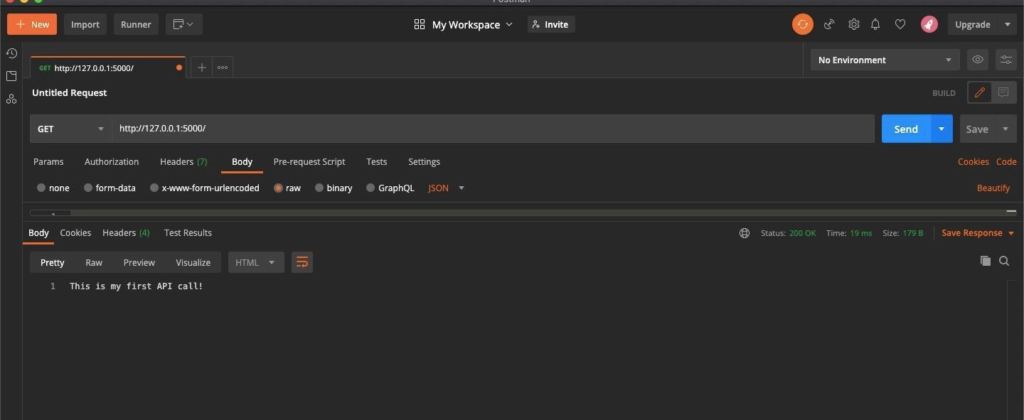Have you ever questioned what Flask is or why Python uses it so frequently? If you’re looking for a simple web development framework, Flask can be the right choice for you. You can start creating web applications immediately, as they are simple to use and understand.
The web framework Flask makes making your websites simple. What else? Let’s read on.
What is Flask?
Flask is a compact Python web framework that offers helpful tools and functionalities for developing online applications. Because you can easily create a web application using only one Python file, it allows developers flexibility and is an approachable framework for beginning developers.
Likewise, Flask is expandable and doesn’t require a specific directory structure or lengthy boilerplate code. With Flask, it’s too easy to develop web apps in Python. Python libraries can include sophisticated functionality in your online application, such as validating web forms or storing data in a database.
But not just web apps, Flask can be equally used to create software and APIs & set up databases & web services to communicate with an HTTP server. But how can you do all that? Let us walk you through it!
Developing with Flask – A Quick Intro:
Flask is a terrific Python framework for creating web applications, so if you want to learn how to do it yourself, you should try it! Let’s start.
You are setting up a development environment. On most systems, installing Flask and Python is a basic procedure. However, it may differ significantly depending on your system. The first step is to set up a development environment that enables you to construct and deploy new apps before you can start creating applications using Flask.
- Installing Python
First, go to the Python website and get the system installer there. After clicking the Download option, choose the right version from the drop-down selection and continue. The installer will download and launch automatically. It’s better to install the recent version – Python 3. X as it supports the latest features of Flask.
- Installing Virtualenv
Using the application Virtualenv, you can install different Python versions & other programming tools on a single machine. In addition, you can build distinct features for each program, removing conflicts & enhancing development.
To create virtual-based software environments, you must enter the following command into your terminal window:
$ pip install virtualenv
- Creating a Virtual Environment
To build a virtual environment for your project, you need to run the following command in your terminal window after finding the directory where your web application project is stored:
$ virtualenv env name-of-environment
The virtual environment you just built can be recognized here by the term env. While it’s optional, the name value makes it easy to remember the virtual workspace in the future.
- Installing the Flask Framework
Then install the Flask framework & you can use it for your project. To add the Flask framework to the latest virtual environment, you can use the following code in your terminal window:
$ source env/bin/activate
When you’ve finished, you should be able to use the pip freeze command to check that the Flask framework has been effectively installed in your virtual environment. Then, let’s move on to the next part – creating web apps with Flask!
Web Application Development with Flask:
How do you create your first web-based application in Flask? Check out these steps.
- Installing the Flask Microframework
To start installing the microframework, you must launch a command prompt –
$ pip install flask
It proceeds the installation process & once it’s done, you can benefit from the Flask command line interface.
- Building a Flask Command Line Interface
Enter the create command to implement this.
$flask create my_first_app

With this, the project directory will now contain a new directory named my_first_app. In addition, a file called app.py, which houses the primary code for our program, will be present in the newly formed directory. Additionally, the app.py file will contain the following code.
- Loading the App into a Web Browser
You can use the next command to open this application in a web browser:
$flask serve
As a result, the server will be started, and the app will be visible in the web browser at http://localhost:5000/. To display an alternative message, you can finally change the code.

For a small/medium-scale project with specific needs & requiring individual portions, using Flask web creation is beneficial.
The base of this tech is prototyping. It’s often used to leverage its abilities & packaging to resolve any issue. Ultimately, this framework serves as a tool for customizing software to offer solutions.
With its quick start time, inherent scalability & security, Flask is the ideal framework for the project in multiple circumstances. For example, using Flask, you can operate an integrated unit testing facility to test your application before publishing on a live server. In addition, the framework provides capabilities like a predefined development server, a fast debugger & restful request routing.
For example, Pinterest switched from Django to Flask and now handles billions of queries daily. In addition, the flask’s ability to modularize the codebase as it expands over a predetermined period makes it scalable.
Whether an E-com solution/a small enterprise application, Flask is the priority framework for making smart & efficient software.
API Development with Flask:
When building & managing APIs, Flask is often the preferred framework. In addition, flask-RESTful, Flask-Marshmallow & Flask-Swagger are helpful open-source 3rd-party options that can facilitate development.
To build APIs using Flask, you must incorporate certain steps of developing website applications & saving the app.py file in the directory. From here, you can proceed to the concurrent steps. To launch your Flask server and perform your first API call after the coding part, you need to use the command:
flask run
You’ll see an output like this –

Next, you can use an API testing tool like Postman, copy and paste the URL to make a GET request.
This is what the output will look like –

And with that, you’ll have your first API!
Maintenance of Flask Applications:
As you have already seen, Flask is versatile. Unfortunately, given the many different technologies it can communicate with, a company utilizing Flask often has to pay more for the support of those technologies.
For example, the business would have to search far and wide for an alternative if the technology interacting with your Flask app needed to be updated or withdrawn. Also, as the app grows complex, so will the costs.
Thus, with the Flask application, you’ll regularly need bug fixes, and app updates, execute several checks, scanning 3rd party packages, and ensure continuous integration and deployment. However, it gets all easy with the right Flask Development company. That’s where MarsDevs come in.
Our Flask Development Services:
Our goal as a Flask development business is to be as flexible as our software. Therefore, we provide various collaboration options to our clients to best meet their demands and projects. For example, our team of Python professionals at MarsDevs uses Flask to create websites and customized apps for clients ranging from startups to large corporations.
Be it custom software development or API, from creating a user-friendly bot to programming convenient booking systems, we can build you your dream project in no time with less cost.
Recap:
In recent years, Flask has become one of the most widely used micro-frameworks for building online applications. The framework is well-known among web application developers worldwide and the Python development community.
In this article, we have looked at how Flask can be used to create intelligent applications and APIs. We hope you like it!




I’d like to find out more? I’d care to find out some additional
information.
Excellent post. I will be dealing with a few of these issues
as well..
I have learn some good stuff here. Certainly value bookmarking for revisiting.
I surprise how much effort you place to make any such excellent informative website.
I’m gone to inform my little brother, that he should
also go to see this weblog on regular basis to take updated from most up-to-date news.